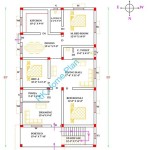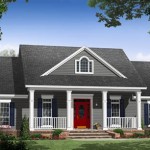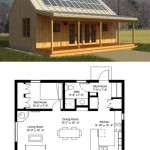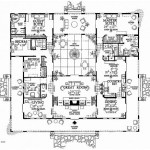Home Plans With Inlaw Apartment: Essential Aspects
In-law apartments, also known as granny flats or accessory dwelling units (ADUs), are becoming increasingly popular as homeowners seek ways to accommodate extended family members, provide housing for aging parents, or generate additional income. When designing a home plan with an in-law apartment, there are several key aspects to consider to ensure that both the main house and the apartment are functional, comfortable, and meet the needs of all occupants.
Layout and Design
The layout of the in-law apartment should provide privacy and independence for its occupants while still offering easy access to the main house. Consider creating a separate entrance for the apartment, either from the outside or through an interior door leading to a private hallway. The apartment should also have its kitchen, bathroom, and living area, giving residents the ability to live independently. The size of the apartment will depend on the number of occupants and their specific needs.
Accessibility
If the in-law apartment is intended for elderly or disabled occupants, accessibility features should be incorporated into the design. These features may include wider doorways, ramps or accessible stairs, grab bars in the bathroom, and lever-style door handles. Additionally, consider the placement of the apartment in relation to the main house. If elderly or disabled occupants will be using a wheelchair, it's important to make sure the apartment is on the ground floor or easily accessible by elevator.
Privacy and Noise Reduction
To ensure privacy for both the occupants of the main house and the apartment, soundproofing measures should be incorporated into the design. This may include using sound-absorbing materials in the walls and ceilings, as well as installing double-glazed windows. Additionally, consider the placement of the apartment in relation to the main living areas of the house to minimize noise disturbance.
Utilities and Shared Spaces
Determine how utilities, such as electricity, gas, water, and sewer, will be shared between the main house and the apartment. In some cases, it may be convenient to install separate meters for the apartment to track usage and expenses more accurately. Additionally, consider whether there will be any shared spaces, such as a laundry room or backyard, and how those spaces will be managed.
Building Codes and Regulations
Before designing and building an in-law apartment, it's crucial to check with local building codes and regulations. These codes may specify requirements for the size, layout, accessibility, and other aspects of the apartment. Failure to comply with local codes could result in fines or other penalties.
Financial Considerations
Building an in-law apartment can be a significant financial investment. Consider the costs of construction, materials, permits, and utility hookups. If the apartment is intended as a rental unit, factor in the potential rental income to determine the return on investment.
Conclusion
By carefully considering the essential aspects of home plans with in-law apartments, you can create a functional, comfortable, and accessible living space for extended family members or other occupants. Remember to consult with local building codes and regulations, and work with a qualified architect or designer to ensure that the design meets both your needs and the requirements of the municipality.

Southern Style House Plan With In Law Suite

Plan 65862 Tuscan Style House Floor Plans With 2091 Sq Ft 3 Be

Modern Farmhouse Plan With In Law Suite 70607mk Architectural Designs House Plans

House Plans With In Law Suites Houseplans Blog Com

Find The Perfect In Law Suite Our Best House Plans Dfd Blog

House Plans With In Law Suites Houseplans Blog Com

Exquisite Mountain Modern Home Plan With In Law Suite And 4 Car Garage 95104rw Architectural Designs House Plans

Pin On Dream Home

Front Side View House Plans With A Separate In Law Suite

Adding An In Law Suite Designing Your Perfect House








